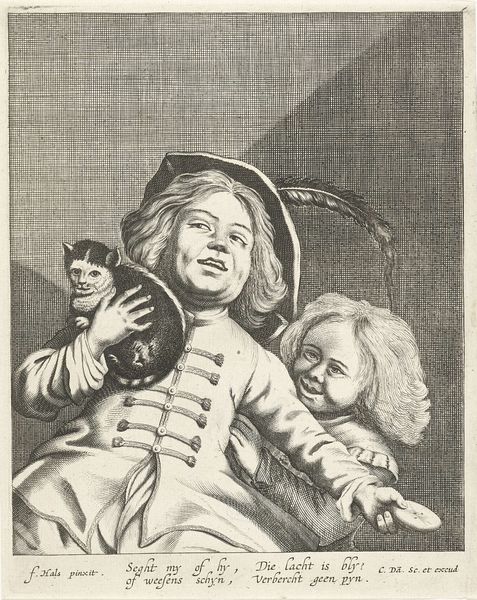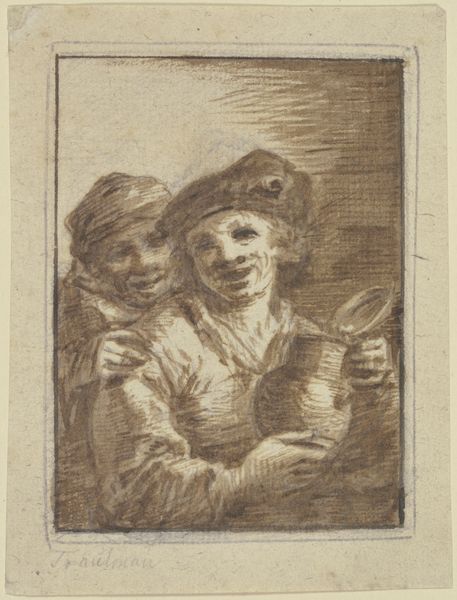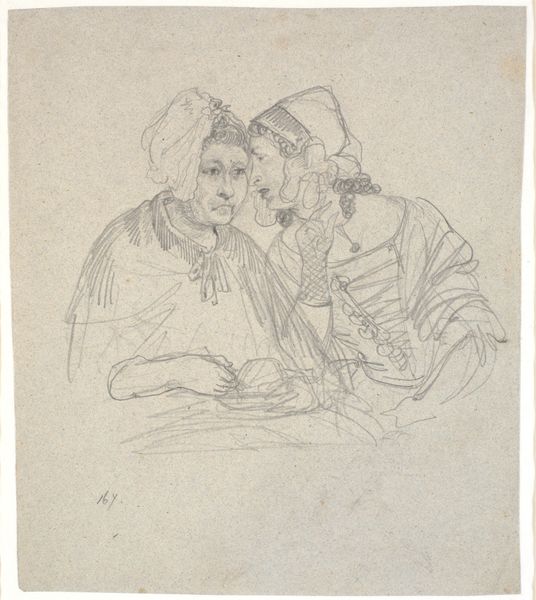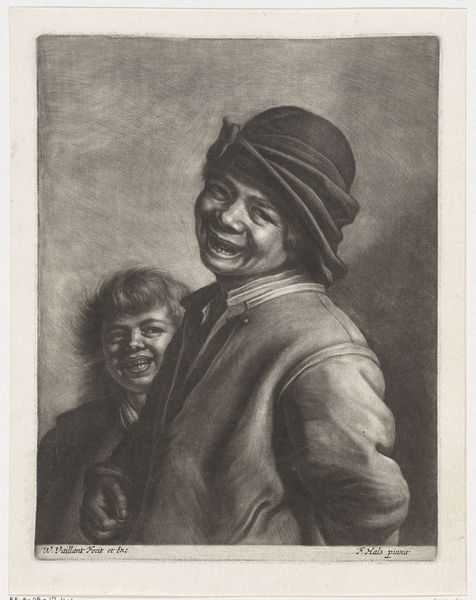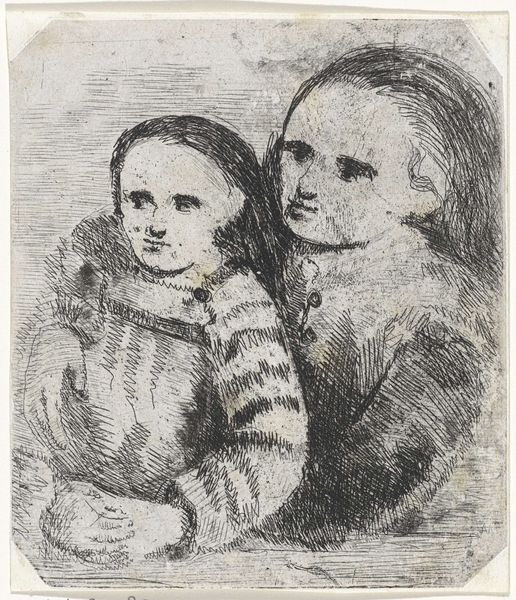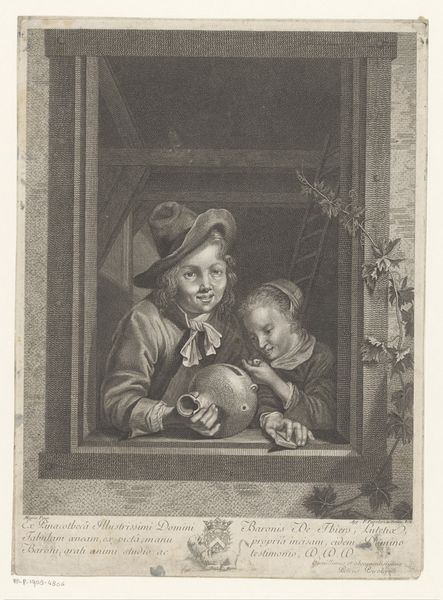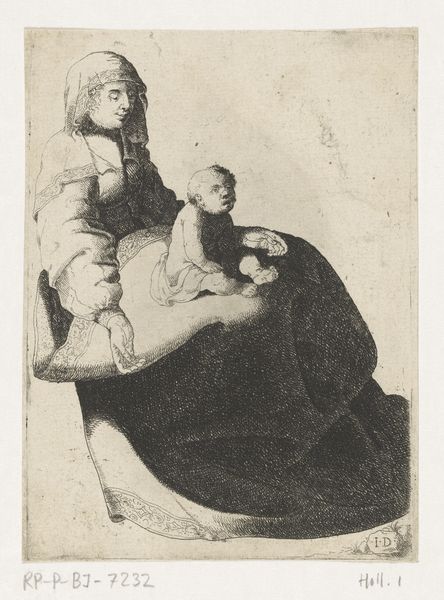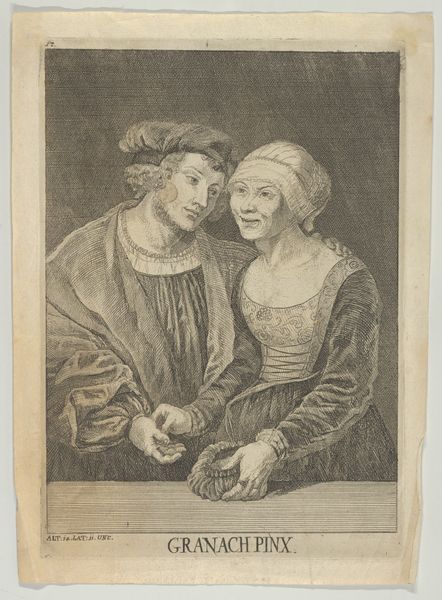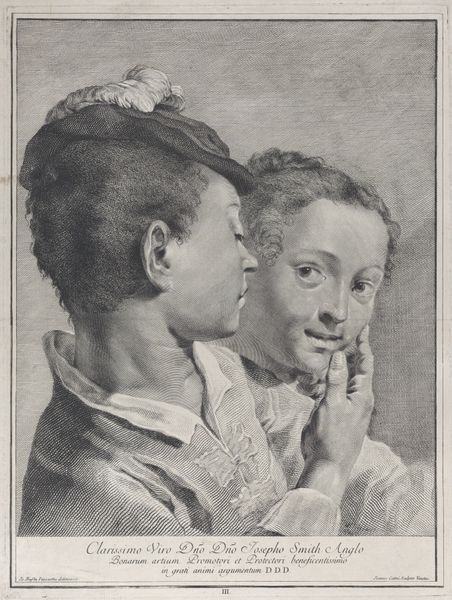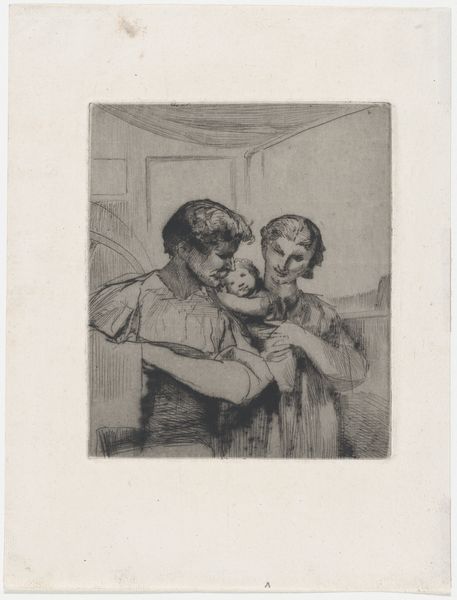
drawing, paper, ink, pencil
#
portrait
#
drawing
#
baroque
#
paper
#
ink
#
pencil drawing
#
pencil
#
portrait drawing
Copyright: Public Domain
Editor: So, here we have "A Farmer and his Wife with a Wine Jug", a drawing in ink and pencil on paper by Johann Georg Trautmann. I'm really struck by how expressive their faces are, even with the limited shading. How do you read this composition? Curator: The composition immediately presents a dichotomy. The surface, executed with clear linear precision, belies the visceral nature of the subjects' evident revelry. The tonal range, whilst constrained by the medium, expertly models form and light. Note how Trautmann focuses on textural contrasts; the smoothness of the jug against the rougher textures of the figures' clothing and skin, for example. Editor: Yes, I see how he uses line weight to create those different textures. What does that juxtaposition accomplish? Curator: By juxtaposing the coarseness of rural life with a sophisticated technique, Trautmann elevates the subjects. Observe how the faces, though realistically rendered, possess an almost theatrical quality. Do you see it as caricature? The intensity of their expressions almost feels performative. Editor: I hadn't thought about it that way, but now I see it! The artist seems to be playing with the tension between realism and theatricality. There's an element of social commentary maybe? Curator: The artist invites us to consider the aesthetic value inherent in everyday subjects. By drawing our attention to these intrinsic artistic decisions, Trautmann compels us to think critically about form and content. The act of drinking transforms into a spectacle of composition. Editor: I find it so intriguing how a seemingly simple drawing can reveal such complex considerations of art making! Thanks for sharing that perspective. Curator: Indeed, understanding art often hinges on appreciating the subtle dance between what is depicted and how it is depicted, and in what formalist space.
Comments
No comments
Be the first to comment and join the conversation on the ultimate creative platform.
